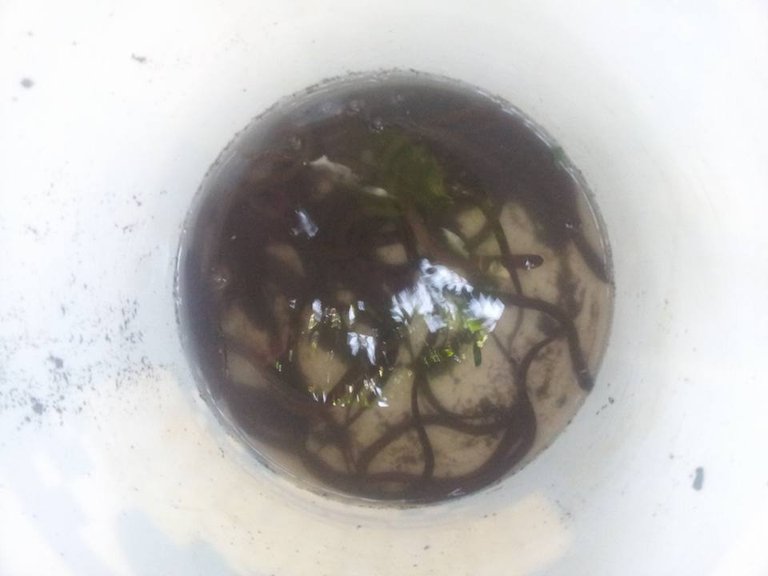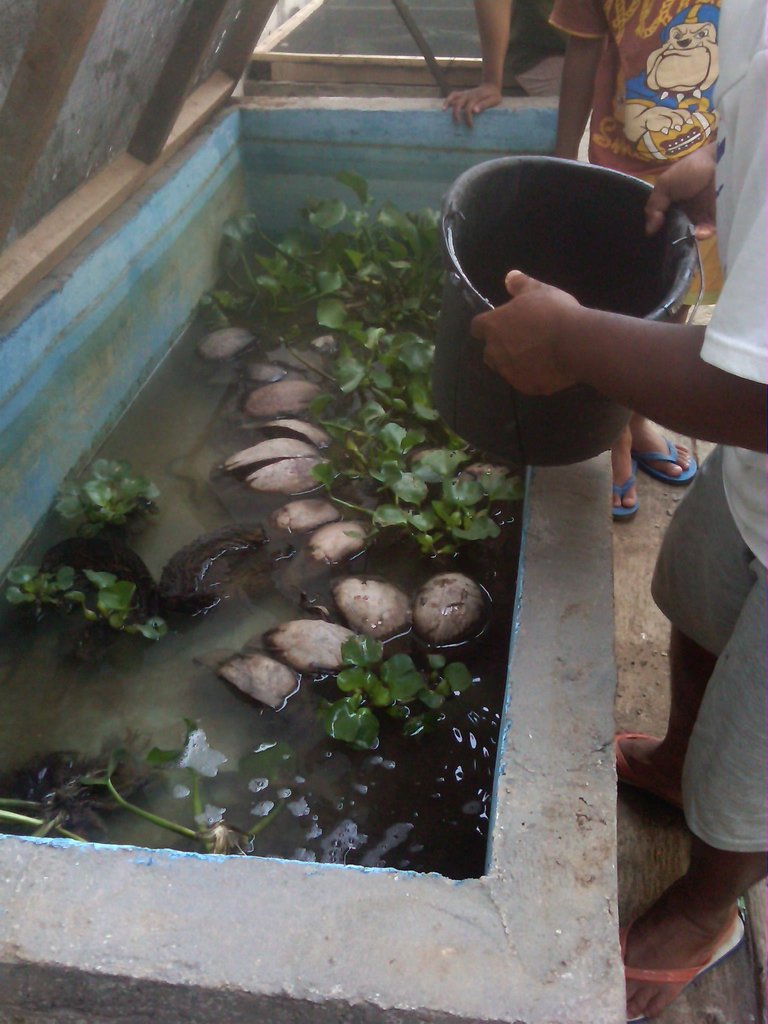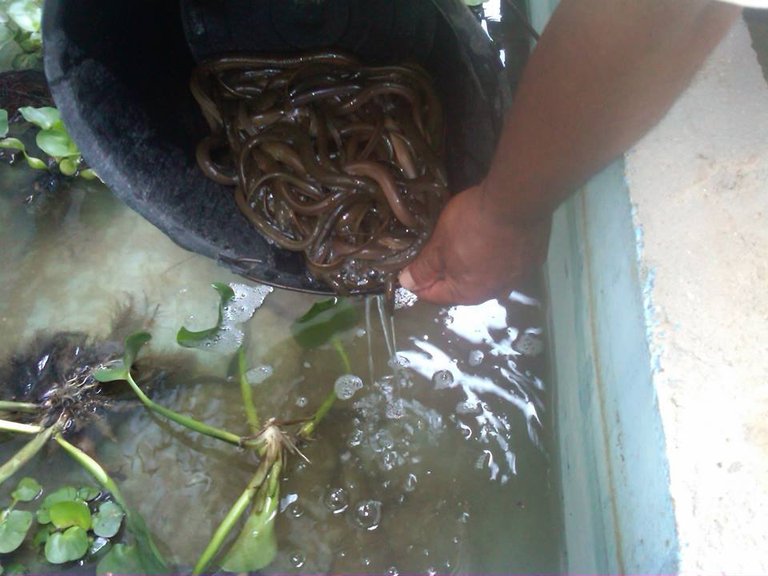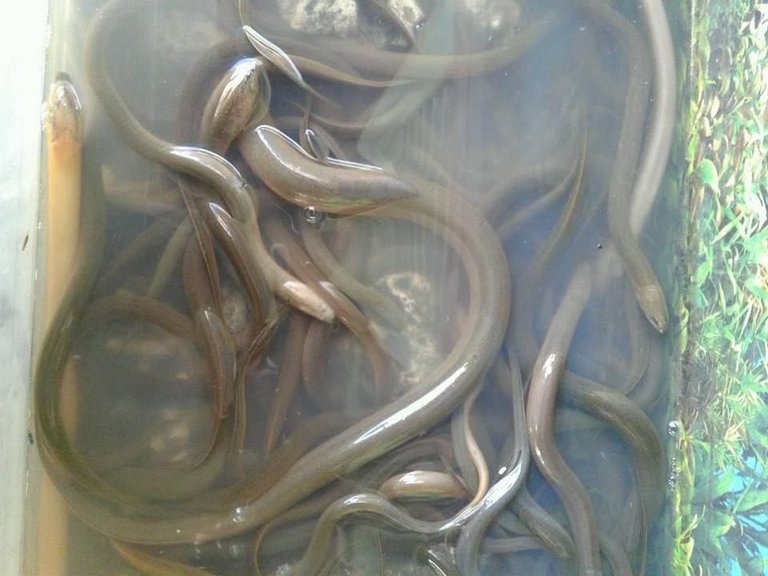Eels are aquatic animals classified in fish groups. In contrast to most other types of fish, eels can live in mud with little water. This animal has two respiratory systems that can make it survive in these conditions.Belly is one type of freshwater fish high enough fans. Eels are very good to eat because it has a good nutritional content for the health of our bodies.
There are two segments of the eel cultivation of nursery and enlargement. The nursery aims to produce saplings. While the enlargement aims to produce eels to the size of ready consumption. This time alamtani will describe about the cultivation of eel enlargement in the pool wall. Starting from seed selection to harvesting. May be useful.
- Selecting eel seeds
Eel cultivation for the enlargement segment usually uses seeds eels size 10-12 cm long. Seedlings of this size requires maintenance time of about 3-4 months, until ready for consumption. For export markets that require larger sizes, maintenance time can be up to 6 months.

- Prepare the pond cultivation eels
Eel cultivation can be done in a permanent or semi permanent pond. Permanent ponds are often used include land ponds, rice fields, and a wall of the wall. While the semi-permanent pools include tarpaulin ponds, drums, barrels, plastic containers and nets. This time we will discuss the eel cultivation in the pool wall. Swimming pool is relatively stronger, its economic life can last up to 5 years. The shape and extent of the pool wall can be made of various kinds, adapted to the state of space and needs. The height of the pool ranges from 1-1.25 meters. The exhaust hole is made with a rather large pipe to facilitate growing media replacement.


Media grows for eel cultivation
In the wild eels are often found in muddy waters. Mud is a refuge for eels. In the pond cultivation too, eel requires the media to grow in the form of mud. Some materials that can be used as material to make mud / media grow, among others, sludge, compost, humus, manure, rice husk, rice straw, banana banana, bran, water plants, and microbial decomposers.Seedling and water distribution
Eels are animals that can be cultivated with high density. Density of stocking for seeds eel size 10-12 cm length ranges from 50-100 tail / m2. Do the seedling spread in the morning or evening, so that eels are not stressed. Seeds derived from natural catches should be quarantined for 1-2 days. Quarantine process is done by putting seeds in clean running water. Give the egg egg whites during the quarantine process.
Arrange the water circulation thoroughly. Do not be too heavy (water like puddles of rice fields) is important to occur water circulation. Also set the water depth, it affects the eel posture. Water is too deep will make the eel move a lot to take oxygen from the surface, so the eel will be thinner.

- Feeding
Eels are greedy animals. Delays in feeding can be fatal. Especially on the new eel stocked. Feeding dosage should be adjusted to the eel population weight. In general eels need 5-20% of the weight of the body weight every day.
Eel cultivation feed can be live feed or dead feed. Live feed for small eels (larvae) include zooplankton, worms, water fleas (daphnia / moina), worms, tadpoles, fish larvae, and insect larvae. While adult eel can be fed in the form of fish, frogs, insects, yuyu crabs, snails, maggots, and snails. The frequency of live feeding can be done every 3 days.
For dead feeds can be given chicken carcasses, snail chops, trash fish, yuyu crab chop, or pellets. Die feed for eel cultivation should be given after boiling first. Frequency of feeding can be 1-2 times daily.

- Harvesting
There is no standard how big the size of the eels are said to be ready for consumption. But in general the domestic market usually requires smaller eels, while export markets require larger sizes. For the domestic market, long maintenance of magnification ranges from 3-4 months, while for export market 3-6 months, even more, since the seeds stocked.
There are two ways to harvest eel cultivation, partial harvest and total harvest. Harvesting is partially done by harvesting all eel populations, then the small eels are separated to be reared. While total harvesting is usually done on intensive eel farming, where feeding and cultivation methods are done carefully. So that the eel produced has a more uniform size.


On my pond I used to grow catfish and eel before but when rain strike half of them left. That makes me shift to grow tilapia and fresh water bass. My pond is 30 feet deep sitting on 700 square meter. It actually a mini dam or lake.
That is a good business in the areas where eel is really eaten a lot. Also it is a fish, and fish is really consumed by many people due to their richness in nutrients. Looks like it will take a little time, but a profitable business
This is almost exactly the way catfish is cultivated. I don't know eels but the description fit the one we call catfish. I am also planning of cultivating the catfish.
Thanks for this information
Hey i've write about The FaKe LoVe can you read it , and give me vote if you like it
Support me
https://steemit.com/love/@mokh-tar/the-fake-i-love-you-just-read-it
Congratulations @inovatips, this post is the most rewarded post (based on pending payouts) in the last 12 hours written by a Dust account holder (accounts that hold between 0 and 0.01 Mega Vests). The total number of posts by Dust account holders during this period was 2669 and the total pending payments to posts in this category was $1459.42. To see the full list of highest paid posts across all accounts categories, click here.
If you do not wish to receive these messages in future, please reply stop to this comment.
Congratulations, your post received one of the top 10 most powerful upvotes in the last 12 hours. You received an upvote from @blocktrades valued at 75.67 SBD, based on the pending payout at the time the data was extracted.
If you do not wish to receive these messages in future, reply with the word "stop".
What do you do with the eels? You eat them?
Congratulations @inovatips!
Your post was mentioned in the hit parade in the following category: